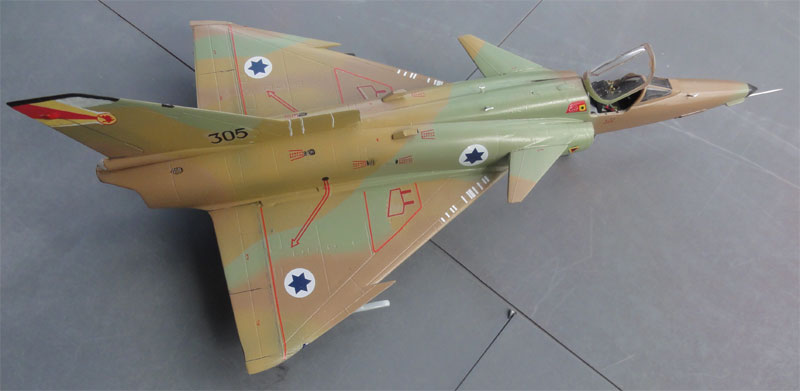[ Page 1 ]
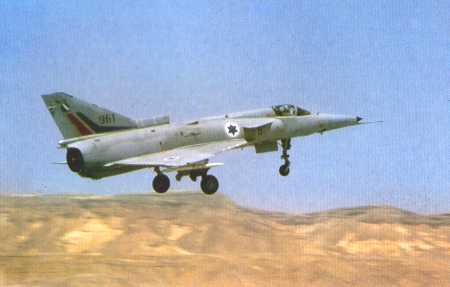
The Kfir (Hebrew: "Lion Cub") was developed as a multitask fighter in Israel as the regular military aircraft supplying country France blocked any sales of Mirages after the 1967 war. Also, engines were not supplied anymore. First, based on the Mirage III / V, the Israeli Aircraft Industries (IAI) developed a "stop gap" aircraft called the Nesher.
But later on, a more advanced aircraft was developed, called the Kfir ("Lion Cub") using the USA licensed built J79 engine as used in the F-4 Phantom. The fuselage was adapted and some large intake scopes fitted. It retained 2 DEFA type 30 mm canons. The Kfir was in fact a new type now and first got the Martin Baker mk.6 ejection seat.
The Kfir at first had no canard and first flight was Mid 1973. The C.1 was the first operational IAF Kfir and had no canard. The C.1 was upgraded to the "C.1 plus" and got a small canard. Also some earlier aircraft were "retrofitted" with small canards.

The USA needed
"agressor training" jets for the US Navy and Marines Corps and leased a
version of the Kfir C.1 "plus", called the F-21A. It had a narrow chord
canard on the intakes and strakes on the forward fuselage. The wing was
unchanged with a straight leading edge with a slot. The first F-21A went
to the USA was in 1985 and they were leased until 1989.
Several Kfir
versions were at IAI developed: the C.2 Kfir which got a much bigger canards,
a wing with an extended outboard wing chord with a curve and the slot was
not there anymore. The TC.2 is a longer nosed double seater trainer version.
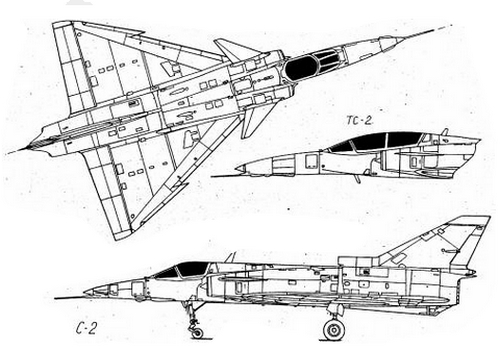
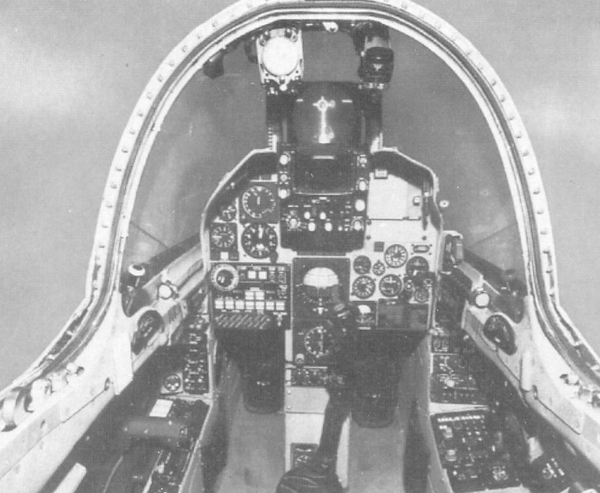 C.2
cockpit.
C.2
cockpit. 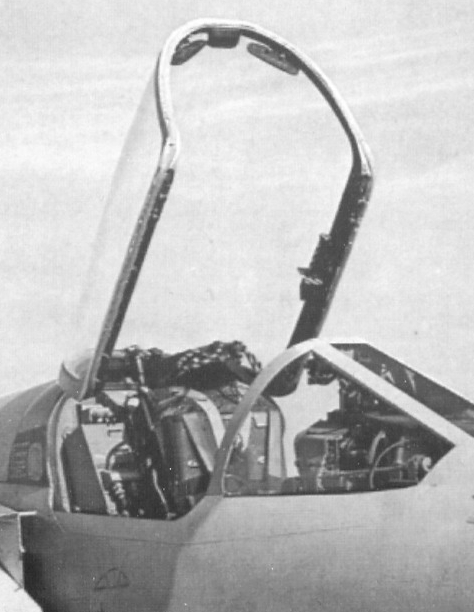 .
.
.. mk.6 seat
mk.6 seat
Further development led to the C.7 with improved J79 engine and extra pylons/hardpoints under the intakes.
Systems
upgrades included a HOTAS cockpit with other display and in flight
refuelling
capability. The seat now was a Martin Baker mk.10 seat. Also various
ECM
equipment and slightly different under nose fairing. A large variety of
weapons could be deployed including smart Laser Guided Bombs if the associated Pave Penny
pod was mounted below the nose. Most C.7 jets were modified in the 1980s IAF Kfir C.2's.
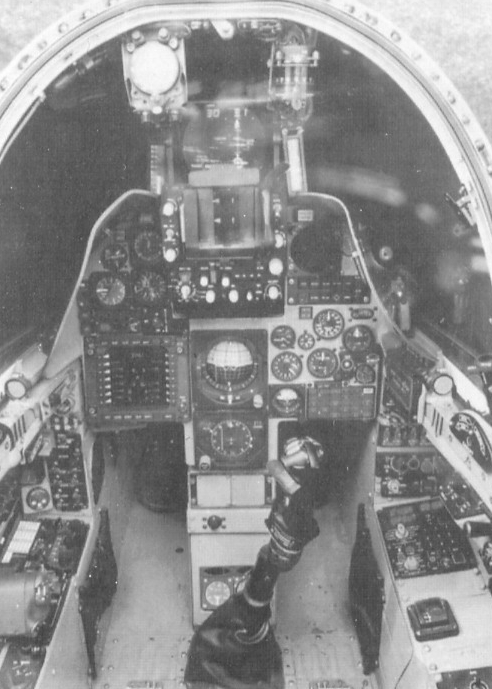 ..
C.7
cockpit
..
C.7
cockpit
The TC.7 is the two seater C.7 version.
Several Kfirs C.2, often re-furbished ex IAF aircraft, were exported such as to Ecuador, Sri Lanka and Colombia. Also, during their careers, upgrades were often done.
The C.10 had again different systems and upgrades mostly internal. The C.10 CE is for Ecuador with CE radar and the COA for Colombia. The TC.7 is the two seater C.7/COA version for Colombia.
Another variant was used in South Africa with local development at Atlas with "Cheetahs" and others. There are substantial differences between the versions mostly seen in nose lengths.
O.K.... back to the kits in 1/72 scale....
page 2
page 3
page 4
Update March 2018: AMK has released a very good 1/72 kit at a very competitive price; if you can buy that one, that is the way to go!
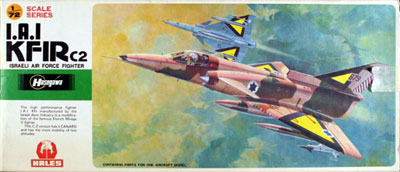
The Hasegawa kit #JS-149 was the first in 1/72 scale of a Kfir C.2 and the kit is now very old. It appeared in various boxes over the years and also seen in the HALES UK importer box. It is for a C.2 and there are about 55 parts and the kit has raised panellines.
Below parts are seen with some painting already done..
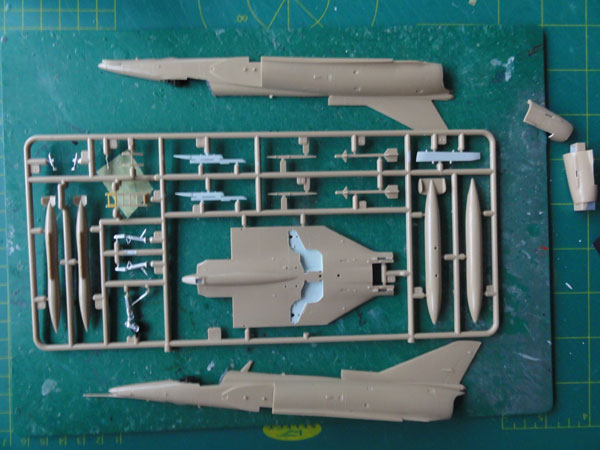
The kit #JS-149 has simple decals for 2 versions:
(1) Paris Le Bourget air show 1977 aircraft "264" of IAI company.
(2) Israeli air force with large black outline yellow recognition triangles;
Typical camouflage colours for the
Israeli Kfir C.2 were: Federal Standard FS33531 sand, FS30219 brown, FS34227
green and lower surfaces FS35622 grey. Often yellow black outlined triangles
for recognition were also applied.
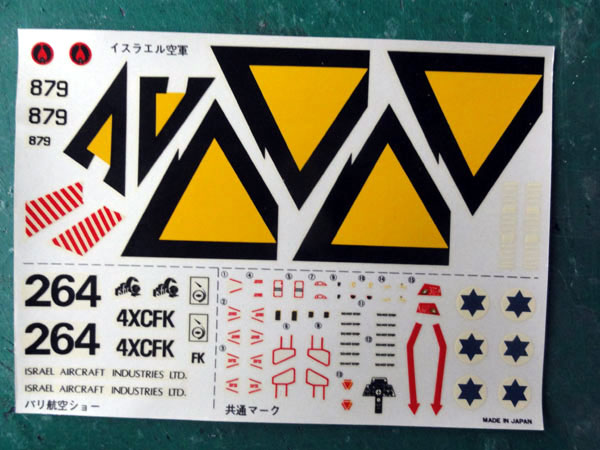
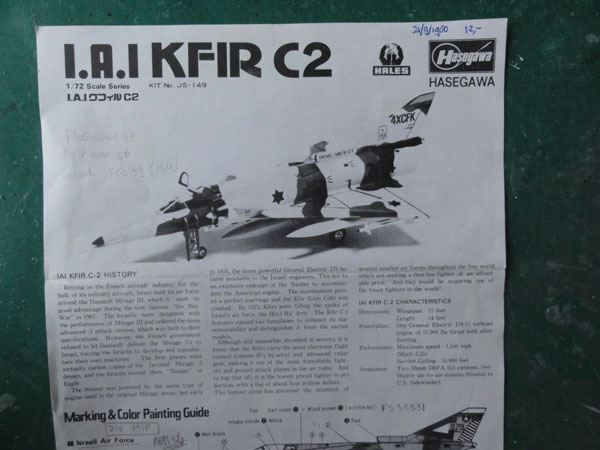
The Hasegawa
kit no. 608" has not the Le Bourget
scheme but additional decals for a grey camouflaged IAF Kfir C.2 markings
(with Fed.Std FS 36375 overall and FS36320 at darker areas) as well as
the scheme (2) above.
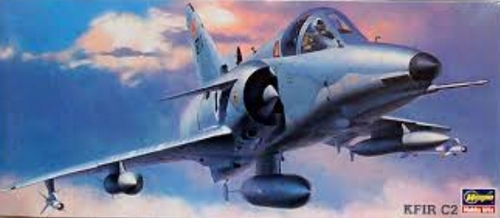 .
.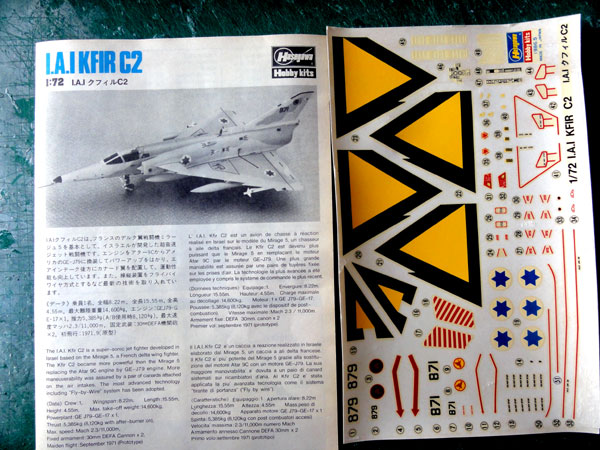
(Please note that when your kit is
very old, the Hasegawa decals tend to crack and break up in water. In that
case cover these with decalfilm like from MicroScale).
The kit cockpit is very simple but
there is a "tub". But there is a gap in the rear bulkhead that needs closing
up with plastic card.
The exhaust is very undeep. Stores
includes pylons and 2 outboard wing fuel tanks, a central fueltank and
2 "Sidewinder" like missiles stated as Shafrirs. The main wheel bays are
a bit undeep and not detailed. The nosewheel is integrally moulded as one
part with the nose gear strut.
 .
.
But there is a separate entry ladder
though a bit thick and the canopy and windshield are separate parts.
The kit shape and dimensions looks good. A straight out of the box assembly can be done but some modellers may prefer to inscribe the main panellines which are raised in the kit. I did not bother as the model would get a green-brown camouflage making most of the panellines less obvious.
Some parts were prepainted like the
intake insides white.
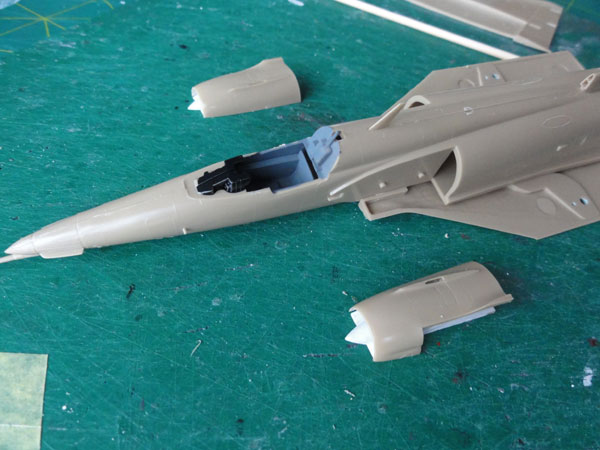
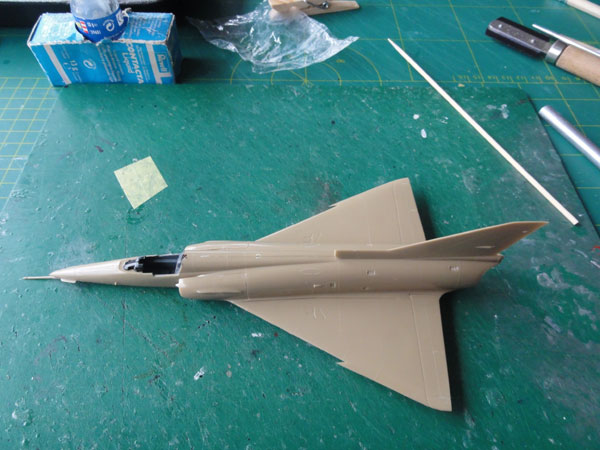
Here the outboard wing leading edge
extensions are well seen (these were not there on the very early Kfir C.1
and F-21).
There is no detail in the main wheel
bays so you may add some bits and stretched sprue to suggest a busy wheel
bay.
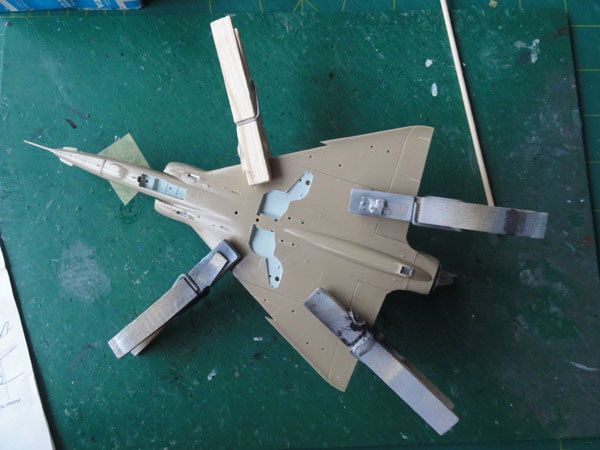
This old Hasegawa kit fits surprisingly
well! Only some tiny spots of filler is needed but the fuel tanks needed
more filler. The fuel tanks also need putty besides some areas at the intakes.
At the lower sections, gaps need to be closed as well.
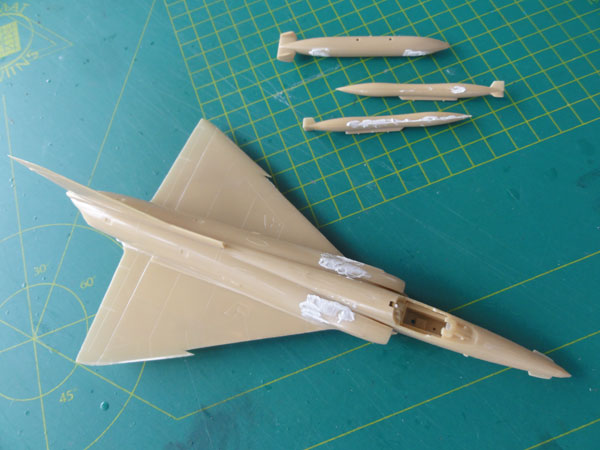
The trailing edge flaps edges, ailerons
edges and rudder were cut in with a razor saw, this looks much better on
any model.

The results after filling and sanding,
canards not yet fitted obviously to make airbrushing easier. The
upper spine antenna was cut off to make sanding easier, it will be installed
back when appropriate for the version later made from thin plastic card.

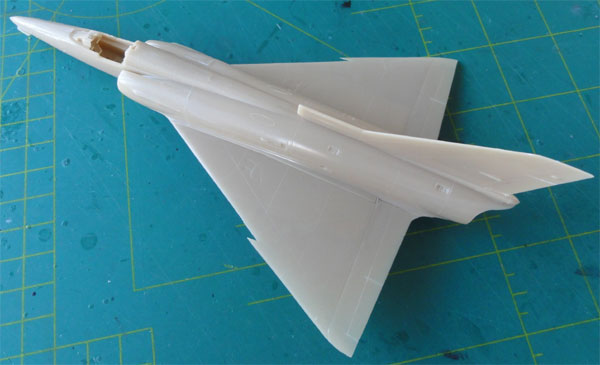
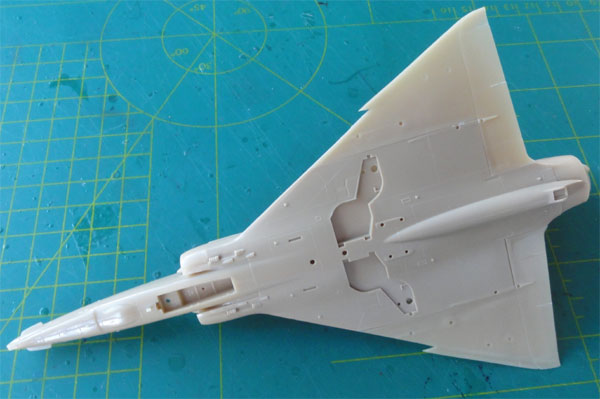
Here it is seen that the main wheel
bays are rather barren, I added some details from scrap using stretched
sprue, metal wire and bits and pieces.

The nose wheel and gear leg are one
part and also bit too crude. The wheel and leg were separated with a razor
saw and a new "fork" made from a piece of etched metal. It improves how
it looks.
 ......
......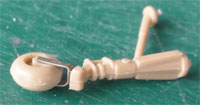
The windshield was to be set onto
the model with white glue. Masking was done as well.
Not a lot of pylons were installed on this model.
A nice colour scheme was selected
and a few Hasegawa Kfirs were to be made.....

[ 1 ]
Kfir C.7
The first Hasegawa kit was made as a C.7. The real Kfir C.7 could be fitted with extra pylons and had modern systems in the cockpit (See notes above). It had a camouflage pattern. The ISRA book shows plenty of detail and the rear of the Italeri box as well for the scheme.
Colours used were acrylics that were
airbrushed with the Harder
Steenbeck (starting first the lighter colours):
Lower surfaces grey FS 35622 using
Gunze Sangyo 314 ;
Light brown Sand FS 33717 using Revell
Aqua 88 ;
Green FS 34227* using Gunze Sangyo
312 ;
Tan brown FS 30219 using Gunze Sangyo
310 ;
*NOTE: later on I found out that on the Kfir the Green is not FS34227 as seen of F-4's and F-16's but FS34424 for which RAF colour Sky Type "S" is an approximation. Also, on the C.7 the blue in the IAF roundel should be slightly lighter blue than on earlier jets.
Other areas were hand painted like
the vertical tail top and some smaller panels and edges black. Masking
was done with low tack masking film (like from Revell).

After colours were applied, time for the decals. But, use the decalling technique to prevent "silvering". A gloss undercoat is really needed. The decals were a mix of the kit and others like the Italeri kit (also to be built). Look at photos as there are slight variations on the real Kfirs, for eaxmple also in antenna layouts. The walkway and arrow marking decals take some care here.
The vertical tail markings came from a Classic Plane TC.2 conversion kit decal sheet (also to be made).
Decalling done....
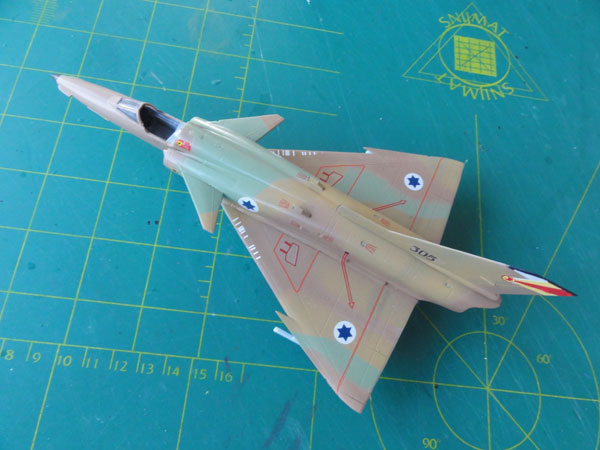
....and after decalling done the details
like the gears added. Some hydraulics were added made from thin metal wires
fixed with super glue. The barren wheel bays got some extra details from
bits and pieces and were painted "off white" as well as the insides of
gear doors. Below also the smaller air intake end exhaust scoops are seen
added from scrap. The canon ports were painted black.
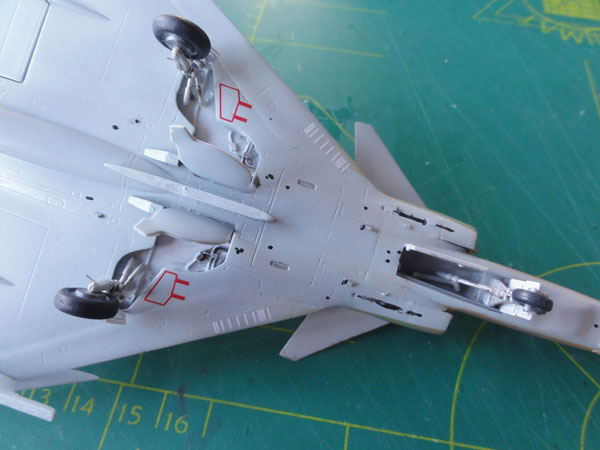
Inside the cockpit details were added
like a HOTAS HUD display with which the Kfir C.7 was fitted. And a Sidewinder
AIM-9B missile from the Hasegawa kit was set below the wing on the outboard
pylon. Pylons are in the kit.
The model got a semi-gloss coat to get an even sheen and protect the decals with the usual technique... .
The seat from the kit got some straps and ejection handles painted yellow-black from thin wire and details. Canopy to be set open was fitted after it got two tiny mirrors. Various tiny probes and pitots were added on the nose; the big spine antenna was not needed for this particular aircraft. That completed this IAF model.
ISRAEL  ...
... ..
.. .......
.......
[ area: 21,000 sq.km | population: 9,7 million | capital: Jerusalem | GDP 55,000 USD nominal ]
The Israeli Air Force (IAF) got many Kfirs for air defense and other missions and of various versions. They were widely used during various conflicts with over 200 Kfir jet deliveries.
Look for more information about the IAF at the Ouragan page here....

Kfir
C.7
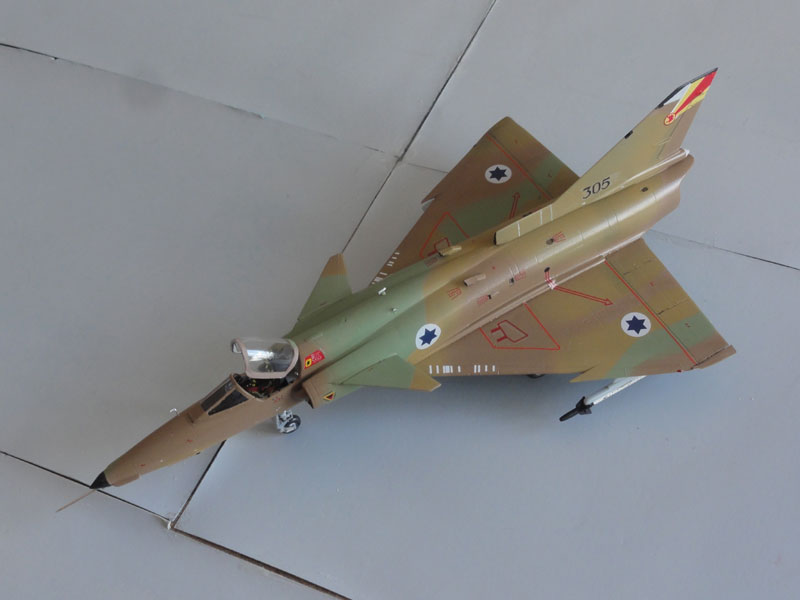
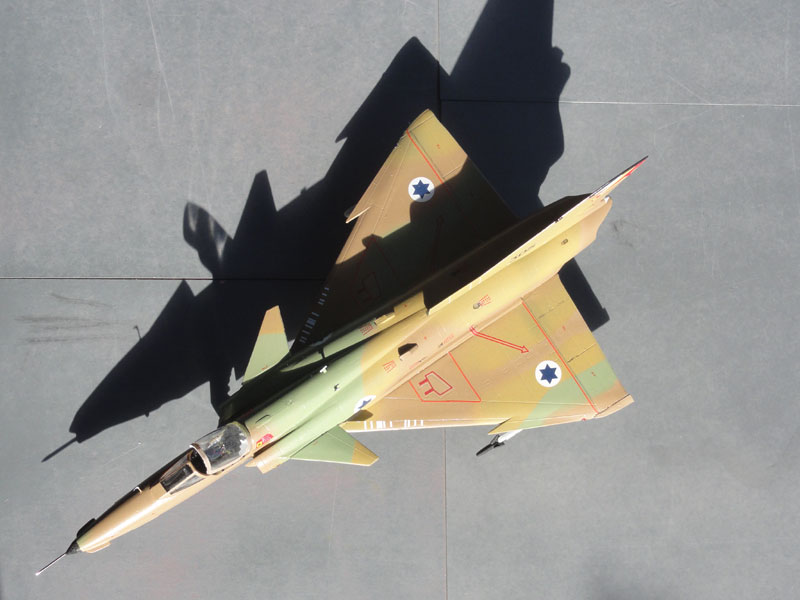
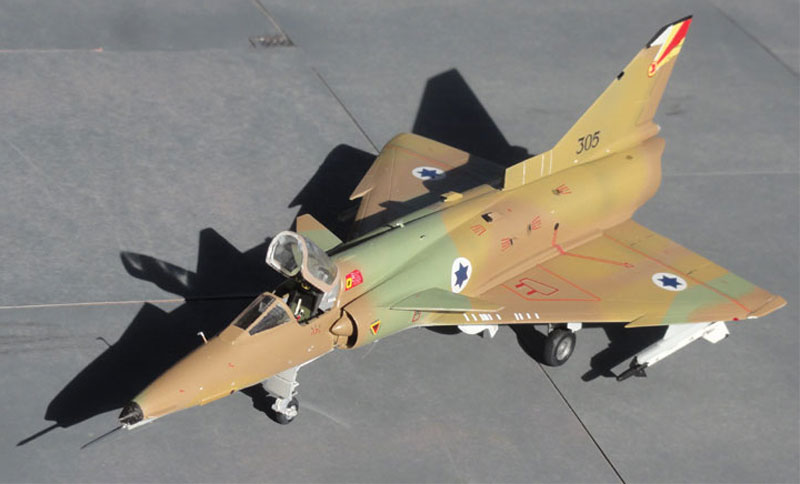

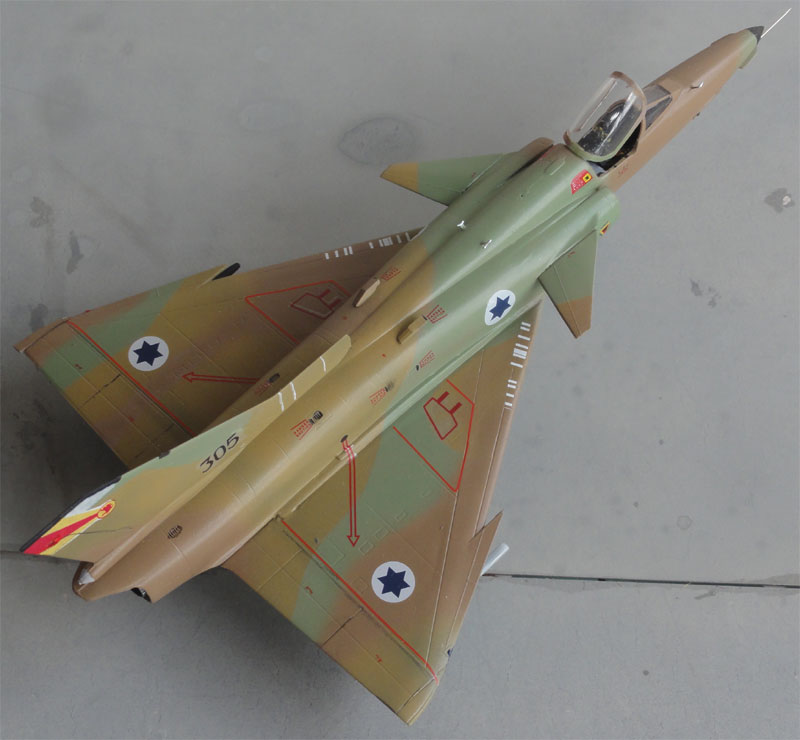
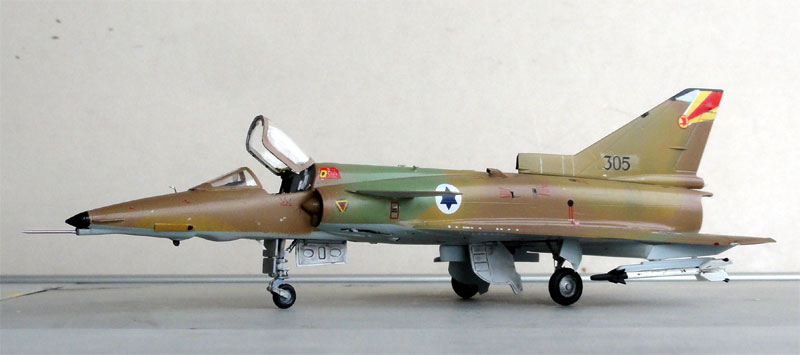 .
.
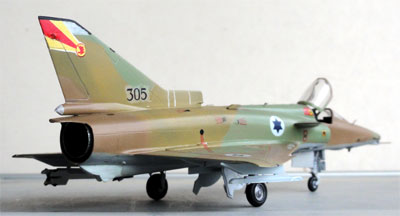 ..
..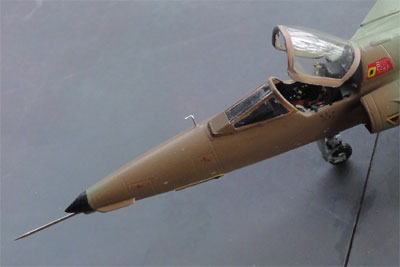
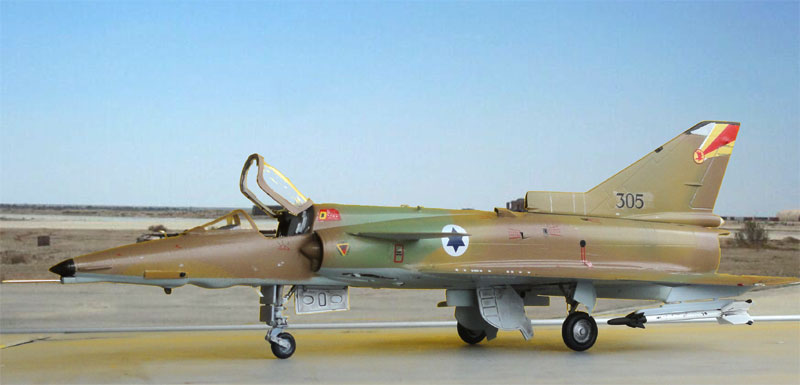
..
..
References
- Kfir, R. Weiss and Y.Efrati, an
ISRA special of Isradecal publications, 1999
- Camouflage and markings of the
Israeli Air Force , part 2 from 1967-2001, by Ray Ball, SAM publications,
2001
- Kfir, International Air Power Review, Volume 15, Airtime publ., 2005
and these oldies.....
- Kfir, Defense Update #55 (Born
in Battle series)
- Air International Vol.16 no 2,
February 1979
- Flug Revue no.77
- Aviation and Marine no. 56 (who
remembers this one??)

(c) Copyright Meindert "designer"/ All rights reserved. Your comments are welcomed by webmaster
Created this page
March 18, 2016
